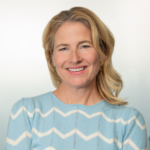by Jennifer Carolan

“ showering students, especially those from struggling families, with networked devices will not shrink the class divide in education. If anything, it will widen it”
— Susan Pinker, journalist and psychologist, in a recent NYT opinion piece.
It’s a refrain I hear often. Usually from people with an iPhone in their hand, laptop in their bag, and an iPad on their nightstand. I’ll make a case that the opposite is true, technology is actually the great equalizer. The progress of technology always has, and always will, improve the economics of disseminating and personalizing information which, after all, is at the core of education. Let me explain why we should all be hopeful.
Over the last three decades affluent kids have pulled away rather dramatically, not just from the poor, but from the middle class as well; their test scores and educational success have increased rapidly according to research from Stanford’s Sean Reardon. In fact, the rich-poor gap in test scores is about 40% larger now than it was 30 years ago. Why? The research of Reardon and Harvard political scientist Robert D. Putnam(author of Bowling Alone) tells a story of disparate experiences: high-income parents pour their families’ resources into their children’s cognitive development and educational success, effectively individualizing and supplementing their schooling. They hire tutors, enroll their kids in specialized summer camps, catch learning challenges early and spend more of what Putnam calls “Goodnight Moon” time with them. Reardon notes, “middle-class and poor families are also increasing the time and money they invest in their children but they are not doing so as quickly or as deeply as the rich.” A Matthew Effect of accumulated micro-advantages set them up for success in a way that seems entirely out of reach to all but the most affluent.
But there’s hope. The most promising path to scale many of these educational advantages for school age children is technology. Since the Gutenberg Press began the democratization of knowledge, technology has brought the experiences of the well-off to the masses. Today, consumer luxuries for the rich like personal chefs, drivers and shoppers are being made accessible to all thanks to technology-enabled services from Munchery, Uber, and Instacart. In edtech, entrepreneurs are bringing tutoring to our public schools, STEM mentors to rural classrooms and apps for classroom teachers to screen for dyslexia in kindergarten.
The high-touch education that Reardon and Putnam describe is more personalized (closer to 1:1), broad (extends beyond testable subjects), and engaging (interactive, passion-driven). In a recently released white paper, NewSchools CEO Stacey Childress lays out a roadmap and vision for launching new models of schooling attuned to the individual and more likely to nurture the expertise and qualities needed in a very skill-driven economy. The job market is becoming increasingly barbell-shaped, rewarding those with the skills to take advantage of an increasingly technology-driven economy and leaving the rest behind.
This personalization at scale is the great potential for education technology and our mission at Reach Capital (formerly NewSchools Seed Fund) is to fund the outstanding entrepreneurs who are delivering that potential value today. Some of our portfolio companies include:
- Zeal, our first seed investment, is democratizing tutoring by enabling on-demand classroom tutors in public school classrooms. Benjamin Bloom’s seminal two sigma study found that the “average tutored student was above 98% of the students in the control class” but concluded 1:1 tutoring was “too costly for societies to bear on a large scale.”
- Endorsed by the National Writing Project, WriteLab is a platform for writers to become more confident and successful in their thinking and writing. Writing is a critical skill and one of the most difficult to teach. Writing instruction is highly technical and feedback is labor-intensive for teachers. WriteLab is rolling out in 100 writing centers this Fall.
- Newsela levels reading content so that struggling readers aren’t stigmatized,advanced readers are challenged and all students can contribute to rich classroom discussion. Newsela automates a task that great teachers already do — it differentiates reading materials so that all children can access inspiring and engaging content.
- Tynker is bringing computer programming to schools. Coding is the new literacy of the digital economy, and an essential skill in almost all lines of work.
- Nearpod and eSpark are platforms for classroom teachers to manage differentiation in a classroom of diverse learners.
The growing disparity in educational outcomes will only exacerbate the already substantial opportunity gap, and unless we do something, it will prove to be an insurmountable hurdle that stands in the way of upward mobility. Education has long since been an escalator of opportunity in the U.S. but the escalator is broken. Let’s embrace technology as a powerful tool to help fix it and keep the American Dream alive.
Thank you to my colleagues Shauntel Poulson, Diana Barthauer and Jim Lobdell for reading drafts and suggestions for improvement.

